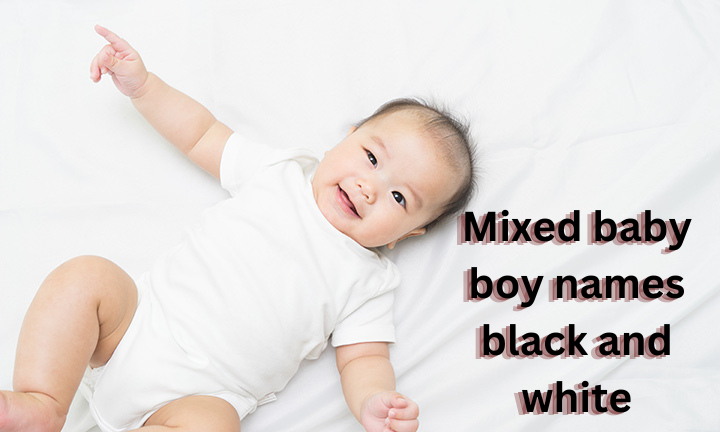Understanding Normal Crying in Newborns: A Parent’s Guide
Welcoming a newborn into the world is a momentous occasion filled with joy and anticipation. “What is normal crying for newborn?” is a question that often perplexes new parents. However, it’s also a time of adjustment and learning, especially when it comes to understanding your baby’s cries. In this comprehensive guide, we’ll delve into the intricacies of newborn crying to help you navigate this essential aspect of parenting with confidence.
Table of Contents

What is normal crying for newborn?
Crying is a natural and essential way for newborns to communicate their needs and express discomfort. It’s crucial to understand that all babies cry, and it’s perfectly normal behavior. On average, newborns cry for about two to three hours a day, with peaks occurring in the late afternoon and evening. However, every baby is unique, and crying patterns can vary.
Causes of Crying
Several factors can contribute to a newborn’s crying, including:
- Hunger: One of the most common reasons for crying in newborns is hunger. Babies have small stomachs and need to feed frequently, often every 2-3 hours.
- Discomfort: Your baby may cry if they are uncomfortable due to a wet diaper, tight clothing, or feeling too hot or cold.
- Fatigue: Babies need plenty of sleep, and when they become overtired, they may cry to signal that they need to rest.
- Gas or Colic: Gas pains or colic can cause significant discomfort for newborns, leading to prolonged bouts of crying, especially in the evenings.
- Overstimulation: Newborns are easily overwhelmed by their environment. Too much noise, bright lights, or excessive handling can lead to crying spells.
Signs of Normal Crying
While it’s essential to recognize that crying is a normal part of infancy, it’s also crucial to be vigilant for signs that may indicate something more serious. Normal crying typically:
- Starts and stops suddenly
- Is not accompanied by other symptoms of illness, such as fever or lethargy
- Can be comforted by feeding, holding, or soothing techniques
Tips for Soothing a Crying Baby
If your newborn is crying and you’ve ruled out hunger, discomfort, and other obvious causes, try the following soothing techniques:
- Hold your baby close and gently rock or sway.
- Offer a pacifier or let your baby suck on your clean finger.
- Create a calm environment by dimming lights and reducing noise.
- Take your baby for a walk in a stroller or baby carrier.
- Try gentle massage or skin-to-skin contact.
Introduction to Newborn Crying
Newborn crying is a natural and essential form of communication. Understanding the reasons behind a baby’s cries is crucial for parents to provide appropriate care and support.
Understanding Normal Crying Patterns
Frequency and Duration
Newborns cry on average for 1 to 3 hours a day. This crying tends to peak at around 6 weeks and gradually decreases thereafter.

Triggers for Crying
Various factors can trigger crying in newborns, including hunger, discomfort, fatigue, overstimulation, and the need for physical contact.
Crying as Communication
Crying is the primary way newborns communicate their needs and feelings since they cannot yet speak. It serves as a signal for caregivers to address the baby’s needs promptly.
Read More :
What should i do after giving birth in 2024
Physical Needs and Comfort
Hunger
Hunger is one of the most common reasons for newborn crying. Babies have small stomachs and need frequent feedings, typically every 2-3 hours.
Diaper Changes
A wet or soiled diaper can cause discomfort, leading to crying. Regular diaper changes are essential for keeping the baby dry and comfortable.
Sleepiness
Newborns require a lot of sleep, but they may struggle to settle themselves. Overtiredness can lead to fussiness and increased crying.
Comfort
Babies seek comfort from physical contact, warmth, and gentle rocking. Providing a soothing environment can help calm a crying newborn.
Potential Health Concerns
Colic
Colic is characterized by excessive, inconsolable crying, often in the late afternoon or evening. It typically resolves on its own by three to four months of age.
Reflux
Gastroesophageal reflux (GER) occurs when stomach contents flow back into the esophagus, causing discomfort and irritability in babies.
Gas
Gas buildup in the digestive system can cause discomfort and crying in newborns. Gentle massage and burping techniques may provide relief.
Tips for Soothing a Crying Newborn
Swaddling
Wrapping a baby snugly in a blanket mimics the feeling of being in the womb, promoting comfort and security.

Rocking
Gentle rocking motions can help calm a fussy baby. Rocking chairs, baby swings, or simply cradling the baby in your arms can be effective.
White Noise
Soft sounds, such as a fan, vacuum cleaner, or white noise machine, can help mask other noises and soothe a crying baby.
Skin-to-Skin Contact
Skin-to-skin contact releases feel-good hormones in both the baby and caregiver, promoting bonding and relaxation.
Parental Response and Support
It’s essential for parents to respond promptly and lovingly to their baby’s cries. Understanding and meeting the baby’s needs fosters trust and security in the parent-child relationship.
- How much crying is considered normal with a newborn? Newborns cry a lot, and that’s perfectly normal. They can’t communicate their needs any other way, so they cry when they’re hungry, wet, tired, uncomfortable, or just want attention. In the first few months of life, babies may cry for several hours a day. What is Colic?: https://kidshealth.org/en/parents/colic.html
- When should I be concerned about my newborn crying? If your baby’s crying seems excessive or inconsolable, or if they have a high-pitched cry that sounds like they’re in pain, it’s a good idea to talk to your pediatrician. There could be an underlying medical condition that needs to be addressed. Also, if your baby’s crying is accompanied by fever, vomiting, or diarrhea, seek medical attention right away.
- What is abnormal crying in newborns? Abnormal crying in newborns can include crying that is high-pitched and continuous, or crying that seems to be in pain. If your baby has a fever, vomiting, or diarrhea along with the crying, it’s important to see a doctor right away.
- What are the three types of baby cries? There isn’t a universally agreed-upon classification of baby cries, but some parents find it helpful to think of cries in terms of needs:
- A hunger cry is usually a rhythmic, long cry that may escalate in intensity.
- A tired cry may be fussy or whiny, with yawns and eye rubbing.
- A discomfort cry might be sudden and high-pitched, accompanied by squirming or arching of the back.
- What does a colic cry sound like? A colicky cry is often described as a high-pitched, inconsolable cry that lasts for long periods. Babies with colic may cry for hours on end, and they may be difficult to soothe. Their cry may also be accompanied by physical symptoms such as clenched fists, arched backs, and furrowed brows.
- Is colic 3 hours of continuous crying? Colic is defined as crying for more than 3 hours a day, more than 3 days a week, for more than 3 weeks. So, it doesn’t have to be continuous crying, but it does tend to be intense and long-lasting.

If you’re concerned about your baby’s crying, it’s always best to err on the side of caution and talk to your doctor. They can help you determine if there’s an underlying issue and recommend strategies for soothing your baby.
Conclusion
Understanding normal crying patterns and responding appropriately to a newborn’s needs are essential skills for new parents. By providing comfort, care, and support, parents can help their baby feel safe, secure, and loved.








Your point of view caught my eye and was very interesting. Thanks. I have a question for you.